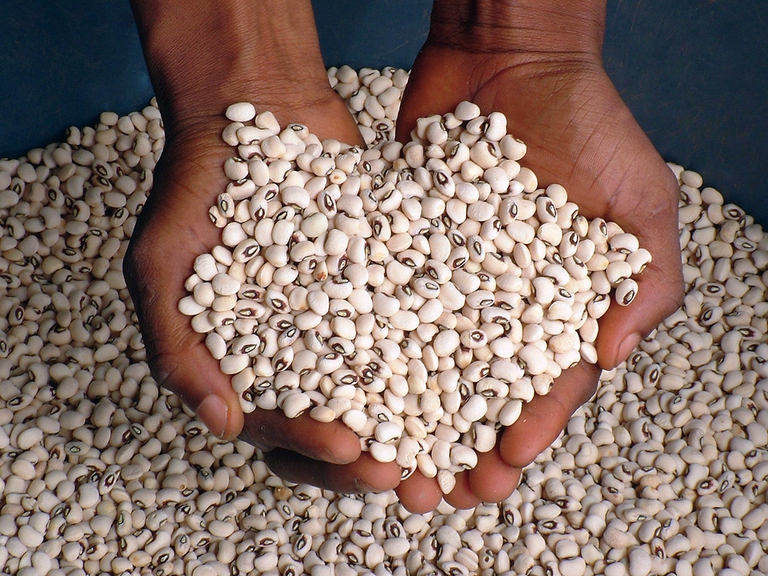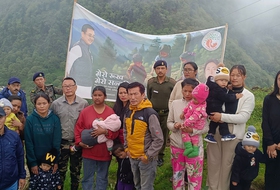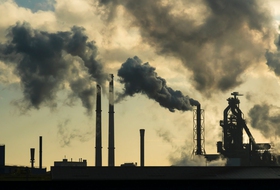
Several hundreds of women in India have rejuvenated vast stretch of forest land through a unique method of guarding the forest.
Hidden in the Arctic ice on a remote island in the Svalbard archipelago, the Global Seed Vault protects the Earth’s crop diversity. Now, 10 years after its construction, the vault must be made even more impregnable to withstand climate change.
It was renamed “doomsday seed vault”, but those who wanted it and take care of it don’t agree with this new name. The official name is Svalbard Global Seed Vault, it was created in 2008 in order to hold the largest possible variety of seeds coming from every corner of planet Earth and protect crop biodiversity.
The vault is on Spitsbergen island in the Svalbatd archipelago, around 1,000 kilometres north of mainland Norway, the political owner of the island. The structure is made up of three halls that can host up to 1.5 million samples each, and is managed by the Norwegian government and the Global Crop Diversity Trust, a foundation that works towards increasing food security around the world.
On the tenth anniversary of its construction, the vault celebrated the entry of the millionth seed, nearly reaching full capacity for one of the three chambers. Currently, the vault stores precisely 1,059,646 types of seeds, against the 2.2 million seeds stored in other vaults around the world, which could soon be stored here too. Cary Fowler, executive director of the fund before Marie Haga, had stated that the vault was going to be used “much sooner than expected” in an interview with Atlantic in February of 2012, four years after the opening.
Read also: The Svalbard Global Seed Vault works. First withdrawal comes from Syria
This is exactly what happened. On 23 September 2015 the Global Crop Diversity Trust website declared that the International Center for Agricultural Research in Dry Areas (ICARDA), a seed bank that was previously situated in Aleppo, requested the first withdrawal of 90,000 seeds that were deposited at the Svalbard islands, in an attempt to start over after a forceful transfer to Beirut, Lebanon, far away from the horrors of the Syrian civil war that has been going on since 2011. A fratricidal war that caused more than 340,000 deaths in the course of seven years and forced tens of millions of people to abandon their homes.
ICARDA requested the restitution of 130 out of the 325 samples that had been deposited, containing a total of 116,000 seeds. Amongst these seeds there were some species of grain and orzo that can grow in arid areas. Brian Lainoff, spokesperson of the Crop Trust declared that “Preserving global biodiversity in this way is exactly the objective of the Svalbard Global Seed Vault”.
This facility was created because of various issues that are threatening the planet’s crop diversity, in a time when there’s a need to increase crop yields in a limited surface dedicate to crop growing. In fact, estimates show that 9 billion people will inhabit our planet in 2050, compared to the current 7.5 billion.
The main threats to the planet’s crop diversity are water scarcity, habitat loss and global warming that is causing climate change and its effects, like the melting of the ice caps. This is the only way to contrast all of these problems and protect our plant heritage.

The seeds are located inside rock vaults approximately 120 metres below ground and are conserved in a dry environment, with an average temperature of -18 degrees. The geographical area is remote and is considered geologically stable. Permafrost acts as a natural refrigerant helping the vault maintain a constantly rigid temperature, which is vital for the conservation of seeds.
Permafrost also posed the greatest threat to the seed vault and those who manage it, even though it was designed to withstand natural and human-related disasters for one millennia, including asteroid impacts and a nuclear war. The Global Seed Vault suffered water damage caused by the melting of permafrost due to the extraordinary temperatures that were predicted by researchers who study global warming, but still shouldn’t have been able to melt what is by definition a permanently frozen terrain.
Hege Njaa Aschim, a member of the Norwegian Government (owner of the vault) declared that “a lot of water went into the start of the tunnel and then it froze to ice”. After all, temperatures in the North Pole last year were extraordinary as well.
Read also: Seeds of Time, a documentary to plant the seeds of change
Temperatures in the Arctic region reached 6°C, 35 degrees above the seasonal average. An extraordinary all time record that was reached in northern Greenland. Climatologist Robert Graham told the AFP press agency that “positive temperatures in the North Pole have been registered only four times from 1980 to 2010. And this happened in four out of the last five years,” Kapikan concluded. “It’s an exceptional season for the area, following 2016 which was already especially mild”.
The Arctic Circle plays a critical role balancing the global climate system. In fact, permafrost stores enormous amounts of green house gasses, like methane, and now, with an increase in temperatures, they could be released into the atmosphere, amplifying the global warming phenomenon, just like a vicious circle.
Luckily, the flooding incident didn’t cause any damage, but it forced the managers of the Global Seed Vault to find a form of pre-emptive protection. Therefore, a 100 million Norwegian Crown (around 10.5 million euros) plan was approved, in order construction of a new, concrete-built access tunnel, as well as a service building to house emergency power and refrigerating units and other electrical equipment that emits heat through the tunnel.
Something amazing has already been accomplished. In the course of ten years, not a single seed was lost during the transferral of the million seeds stored in what was renamed “Noah’s Ark for plant species”. An ark that is ready to set sail if the universal deluge brought by climate change should take place. This is a true miracle.
Siamo anche su WhatsApp. Segui il canale ufficiale LifeGate per restare aggiornata, aggiornato sulle ultime notizie e sulle nostre attività.
![]()
Quest'opera è distribuita con Licenza Creative Commons Attribuzione - Non commerciale - Non opere derivate 4.0 Internazionale.
Several hundreds of women in India have rejuvenated vast stretch of forest land through a unique method of guarding the forest.
The solution developed by the Italian startup Agri-E enables on-site bioethanol production, promoting energy self-sufficiency for farms.
South African court dismisses a major lawsuit by 140,000 Zambian women and children against Anglo American for Kabwe lead poisoning. A setback for affected communities enduring the lasting impact of lead contamination.
Controversial African land deals by Blue Carbon face skepticism regarding their environmental impact and doubts about the company’s track record, raising concerns about potential divergence from authentic environmental initiatives.
Majuli, the world’s largest river island in Assam State of India is quickly disappearing into the Brahmaputra river due to soil erosion.
Food imported into the EU aren’t subject to the same production standards as European food. The introduction of mirror clauses would ensure reciprocity while also encouraging the agroecological transition.
Sikkim is a hilly State in north-east India. Surrounded by villages that attracts outsiders thanks to its soothing calmness and natural beauty.
Sikkim, one of the smallest states in India has made it mandatory for new mothers to plant saplings and protect them like their children to save environment
Chilekwa Mumba is a Zambian is an environmental activist and community organizer. He is known for having organized a successful lawsuit against UK-based mining companies.








